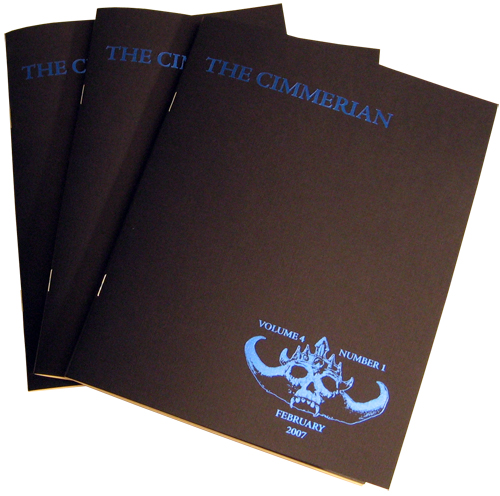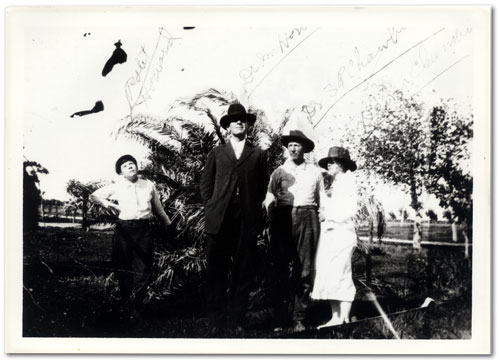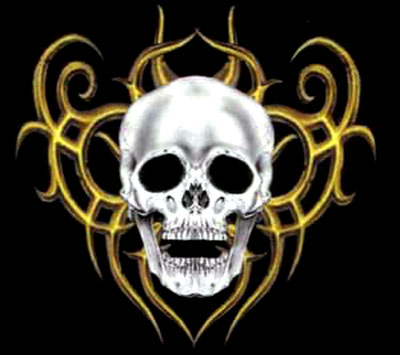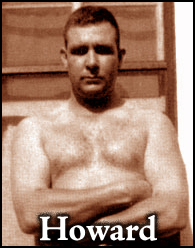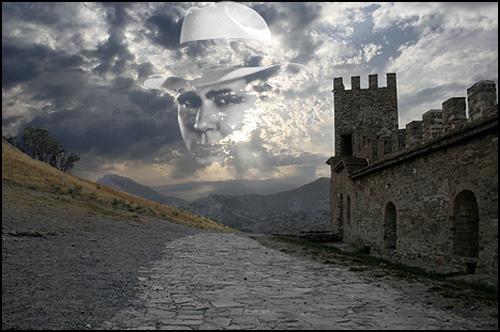
At the dawn of Sword-and-Sorcery, at the very moment of the genre’s Cataclysmic birth, towers a story begun by a solitary Texan barely twenty years old. In the eighty years since, dozens of authors have fed on its aged marrow like vampires. Hundreds of books have appeared mimicking its startling idioms and seductive, haunting prose melodies. Countless millions of dollars have changed hands between readers starving for more of the same and publishers scurrying around like harried Oompa Loompas in their rush to provide it. And yet upon first publication its depressed, suicidal author received a meager $100, and would never again see it reprinted during his lifetime.
The man who meticulously constructed this genre was Robert E. Howard, and the story that exploded onto the scene with a Big Bang that still echoes in our ears today was “The Shadow Kingdom.”
Arguments about the scope and confines of genre too often descend into useless pedantry. I am reminded of film noir scholar Eddie Muller‘s witheringly brilliant retort to hairsplitters who would deny the great Billy Wilder’s Sunset Boulevard (1950) a place in the pantheon: “To those who think this isn’t noir: Man uses woman. Woman uses man. Queasy sex. Betrayal. Madness. Gunshots. He’s face down in the pool he always wanted. Case closed.” For the attentive critic, genre labels have a purpose not to be deflected by myopic minds.
Often the most difficult part of talking intelligently about Sword-and-Sorcery is dodging the flailing Nerf blades swung in its defense by those who ostensibly would protect it from harm. Valka bless the boys at Swordandsorcery.org for the work they do popularizing a much-maligned art form, but articles like “The Demarcation of Sword and Sorcery” obsess over surface elements while careening past deeper connections with the bone-crunching regularity of Charlie Brown missing Lucy’s football. Sometimes you can’t win for losing — in “Demarcation” Steve Tompkins gets his name misspelled even as his “The Shortest Distance Between Two Towers” is trotted out in support of the notion that “there can be little argument that a great deal of separation exists between sword and sorcery and the rest of heroic fantasy.” Cimmerian readers may recall that in fact Tompkins’ essay cogently argues the exact opposite point — that there is in fact a “short distance” and not a “great deal of separation” between these demarcated kingdoms.
In “Demarcation,” author Joe McCullough goes on to conclude that
Sword and sorcery tells the tales of men who are free from all constraint. Their stature and skill mean they are free from the tyranny of other men. Their birth and raising free them from the morals and mores of society, and the lack of higher powers unbinds them from any concept of fate. Thus the heroes of sword and sorcery become the true representatives of free-will, and through their stories, readers are able to imagine the capabilities and the triumphs of men who are completely free to chart their own destiny.
It would be a pity if such rash and improvident definitions ever gain real purchase in the minds of thoughtful readers. The best Sword-and-Sorcery characters resist attempts to reduce them to comfortable stereotypes. Howard’s Kull time and again barely manages to escape from an ever-present entourage of enemies, only to remain ever-ensorcelled by the “ghosts of wild wars and world-ancient feuds,” the “inhuman powers of antiquity,” and most of all the ever-looming “phantom of his hate, the restless hatred of the savage, before which all else must give way.” With each story the King of Valusia triumphs fleetingly if at all, only to be seen at the beginning of the next tale with his golddust turned to sawdust:
There comes, even to kings, the time of great weariness. Then the gold of the throne is brass, the silk of the palace becomes drab. The gems in the diadem and upon the fingers of the women sparkle drearily like the ice of the white seas; the speech of men is as the empty rattle of a jester’s bell and the feel comes of things unreal; even the sun is copper in the sky and the breath of the green ocean is no longer fresh.
Even to kings, Howard purrs, and we can’t help but add “and to Sword-and-Sorcery heroes allegedly free from constraint.” The idea that S&S heroes lack the “mores and morals of society” is rebutted by innumerable passages in Howard’s work, as in this one from “The Scarlet Citadel”:
[Conan] had been placed in these pits for a definite doom. He cursed himself for his refusal of their offer, even while his stubborn manhood revolted at the thought, and he knew that were he taken forth and given another chance, his reply would be the same. He would not sell his subjects to the butcher. And yet it had been with no thought of anyone’s gain but his own that he had seized the kingdom originally. Thus subtly does the instinct of sovereign responsibility enter even a red-handed plunderer sometimes.
Postulating that Sword-and-Sorcery heroes by definition are “free from the tyranny of other men” becomes not only indefensible but insulting when one considers Charles Saunders’ hero Imaro, who thematically resonates as much about tyranny both cosmic and real as any fantasy hero created since December 6, 1865. And maybe it’s the guilty Catholic in me, but I can’t help imagining the shade of Karl Edward Wagner wanting to thump McCullough over the head with a Douay-Rheims Bible over his dictum that Sword-and-Sorcery tales feature a “lack of higher powers” that “unbinds [S&S heroes] from any concept of fate.”
In Tolkien’s defense, “Demarcation” inflicts a few goose eggs onto his wizened skull as well, as when McCullough states that “the rest of heroic fantasy, with its duties and obligations, has historically appealed to an older audience who are aware of the realities of such notions.” Perhaps he’s too young to remember the great surge of longhaired, pot-smoking, Led Zeppelin-worshipping, “Frodo Lives” hippie-folk and collegiate counter-culturists who were the true force behind Tolkien’s meteoric rise to prominence in the 1960s and ’70s. My own generation of young Dungeons & Dragons playing, Commodore 64 programming, “Shining City on a Hill” latchkey kids of the late ’70s and early ’80s solidified the trend.
Too often, knocking down these sorts of arguments feels like hammering gophers back into plastic holes at some bizarre litcrit Chuck-e-Cheese funland. It’s silly to get too tied down to genre for its own sake — Muller’s pithy yet devastatingly effective defense of Sunset Boulevard shows how people who dither with rigid formulas fall short. And yet for a genre to mean anything at all it does need boundaries, however translucent or overlapping. The trick is in defining them in a way so that they have utility in the real world. Noir is a not a series of dance steps executed in a predetermined order, it’s an overall tone — a mood, an overriding sense of cruel irony and inescapable fate. Muller telling noir fans why they better check out Sunset Boulevard — that’s utility. Good genre categorization is like the old canard about identifying pornography: you know it when you see it. That’s assuming, of course, that the critic making such judgments has his eyes open in the first place.
Personally, I see nothing wrong with retroactively folding older works into a modern genre if the result is a greater appreciation and knowledge of the field. If noir guys want to call M noir and make it that much more of an essential film to view, cool beans. If Sword-and-Sorcery buffs insist that Dunsany’s “The Fortress Unvanquishable, Save For Sacnoth” be listed before “The Shadow Kingdom” on any master list of must-read works in the field, more power to them. It’s almost always a bad idea to attempt to forcibly divide great fantasy works from each other on the basis of genre, as often the result is akin to Siamese twins being separated with a chainsaw. A generous policy of inclusion pays large dividends, as when Steve Tompkins demonstrated the benefits of letting the oft-separated blood brothers Tolkien and REH stand shoulder to shoulder. But it’s important to not lose sight of why genres spring up and where the trendlines form. Just as securities in the stock market tend to have remarkable leaders and laggards that drag whole industry groups up or down along with them, so too do seminal works in a genre create identifiable shockwaves throughout an art form, like a stone cast into a pond creating distinct ripples across its surface.
Which to my mind is why Lord Dunsany’s “The Fortress Unvanquishable, Save for Sacnoth” is not the progenitor of the Sword-and-Sorcery genre and “The Shadow Kingdom” is.
Make no mistake: “Sacnoth” is a fine tale that carefully evokes an ancient métier: the pure adult fairy tale. Frequently going out of its way to remind the audience that it is a fiction, at the same time it urges us to lower our sophisticated defenses and fully give ourselves over to the impossible events depicted. It’s a brilliant and heartfelt love letter to the kind of fantasy found in William Beckford’s Vathek or the much older Arabian Nights — in that sense, it deftly and deliberately presents us with nothing new. Like those Sword-and-Sorcery paperbacks of yore, “Sacnoth” is “In the Tradition of. . .” any number of things. And yet despite its formidable presentation of what are now seen as S&S clichés, admiring readers are hard-pressed to say what wouldn’t exist right now had “Sacnoth” never been written. No new genre label was deemed necessary because of “Sacnoth,” no clamor for similar fare was heard, no groundswell of imitation followed its publication. “Sacnoth” and Dunsany both deserve better than they’ve got in recent years, but as it stands the story is a minor curio for fantasy fans. It’s a groin-straining stretch to grant it pride of place as the instigator of the Sword-and-Sorcery genre, despite plodding through tiresome surface calculations of its use of — duh — both swords and sorcery.
“Sacnoth” is best valued as a part of that vast tapestry of the fantastic and mythic that preceded Sword-and-Sorcery, one of thousands of works peppered with elements that would one day become part of the trappings of the new genre. These elements were floating through stories for millennia, but the pressing need to define a neologic subsphere of fantasy occurred precisely due to an explosion of fiction in the middle of the last century, one whose tidal wave ripples can be traced unerringly backwards through a host of authors and fanzines to the adventures of Conan the Cimmerian in the pulp magazine Weird Tales, and from there back in time to Ground Zero: the first such story to appear in that magazine by the same prophetic author — “The Shadow Kingdom.”
Like a prism, “The Shadow Kingdom” focused a series of varying, disparate colors from the fantasy spectrum, blended them in the cauldron of Howard’s imagination, and shot out of the other side a white light unlike anything seen before. Legions of readers and writers have been wrestling with the repercussions of that eerie witch-glow ever since. It shines both forward and backward in space/time and illuminates countless works of merit, including Lord Dunsany’s “The Fortress Unvanquishable, Save For Sacnoth.” But the luminous filament casting that glare clearly emanates from a single place and time — a white clapboard house in Texas circa 1926. Remembering that not only honors Howard, but helps us clearly see what we mean when we say “Sword-and-Sorcery.” We know it when we see it because Kull lit the way, and we still worry and wonder about it because Conan built the Fortress that yet protects it from ruin, and from those who seek to peel off authors and stories and banish them to the hinterlands, whether said authors be past masters such as Lord Dunsany or J.R.R. Tolkien, or modern notables such as David Gemmell, Charles Saunders, or Karl Edward Wagner.
